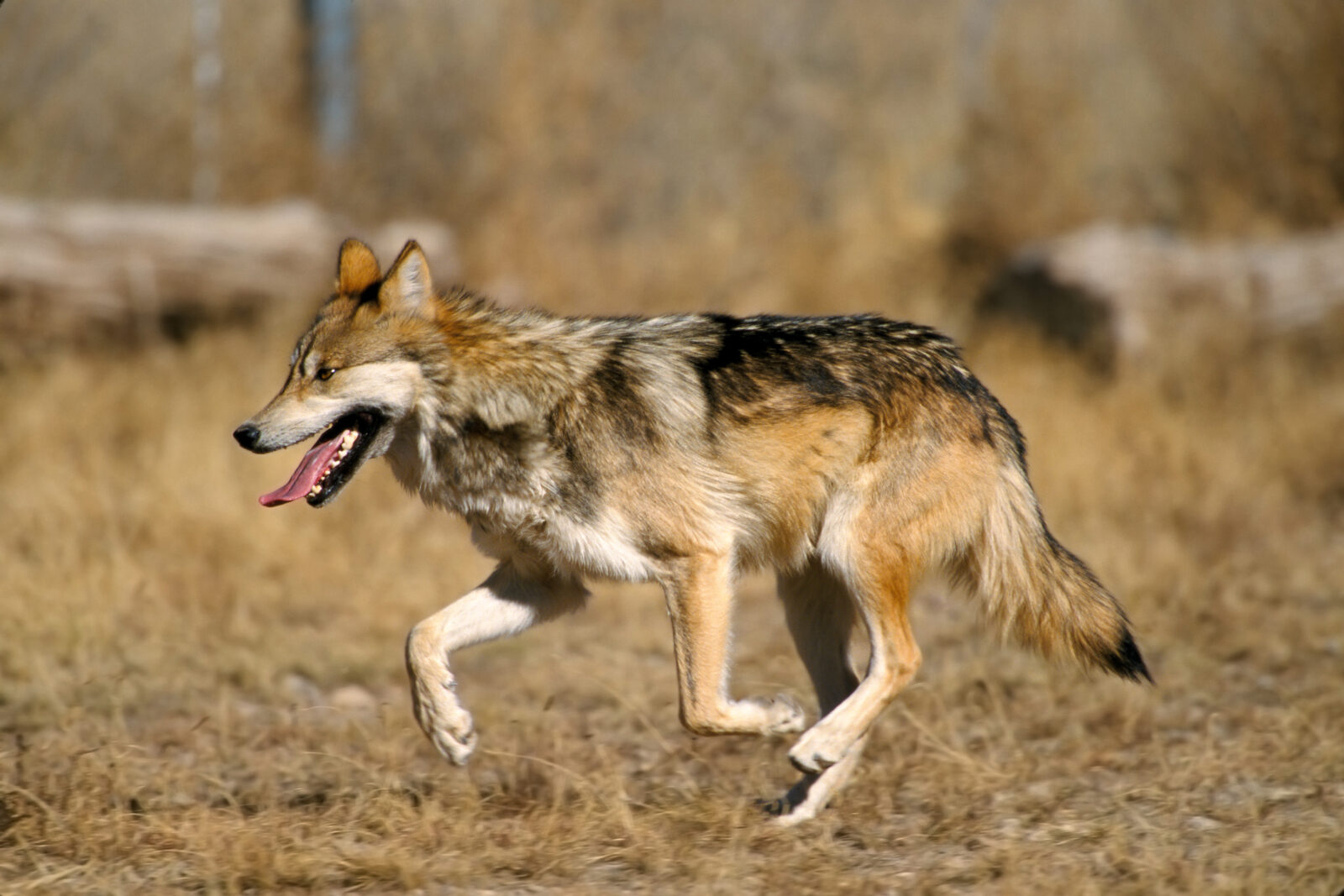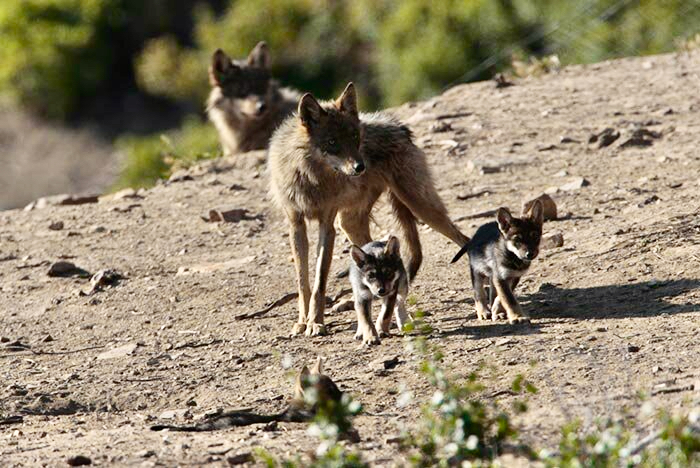This episode of Treehuggers International originally aired on January 18, 2009, on KBZT FM 94/9 in San Diego.
By Tommy Hough
With only about 40 animals left in the wild at the time of this show’s recording in early 2009, the Mexican Gray Wolf is one of the most endangered species in North America. And with wolves bounced on and off the federal Endangered Species list like a political football, marginal preservation enforcement from agencies, growing acquiescence to state control over wildlife management, lingering hostility and medieval superstitions over the animals’ presence, and bloodthirsty state-sanctioned hunts from Idaho to the Great Lakes increasing in outright cruelty and severity, tough times lay ahead for this most wild and organized of animals.
The former executive director and current development director for the California Wolf Center near Julian, Patrick Valentino talks with Treehuggers International host Tommy Hough about the plight of the Mexican Wolf and other wolf subspecies throughout the west. Patrick also shares some hopeful opportunities for wolves’ recovery in an era where they no longer enjoy explicit federal protection — and in which political leaders of both parties are reluctant to stand up for these predators crucial to balanced ecosystems.
King Cattle and the Wolf: Lost Lobos
The Mexican Wolf is the southernmost, most genetically distinct, and rarest of all subspecies of the Gray Wolf in North America. It is also one of the smallest, measuring four-and-a-half feet in length with a height just shy of a yard.
Until the late 1800s, the Mexican Wolf ranged the Sonoran and Chihuahuan deserts from central Mexico to western Texas, and from southern New Mexico to central Arizona. However, by the the turn of the century, reduction of wolves’ natural prey like deer and elk saw the animals to turning to domestic livestock for sustenance. This didn’t sit well with ranchers and other “entrepreneurs” eager to make the west into a colossal cattle ranch, leading to significant efforts by government agencies, states — and plenty of individuals — to eradicate the Mexican Wolf from the southwest.
Sadly, these efforts were quite successful. By the 1950s the Mexican Wolf had been eliminated from the wild, and was declared an endangered species in 1976. It has remained so ever since.
But by the mid-1990s conservationists were eager to restore a natural balance to the wildlands of the southwest, and for once, they had a friendly ear in the Interior Department. In 1997 Interior Secretary Bruce Babbitt authorized the U.S. Fish and Wildlife Service (USFWS) to reintroduce Mexican Wolves into the Blue Range area of Arizona, including the Apache-Sitgreaves and Gila National Forests of of Arizona and New Mexico.
Since then, the Mexican Wolf’s recovery has been stagnated by hostility and illegal killings, and by the beginning of 2008 the number of Mexican Wolves in the wild had dropped to a critical level of 52 animals.
California Wolf Center
Located near Julian in the San Diego County backcountry, the California Wolf Center was founded in 1977 to educate the public about the wildlife and ecology of the southwest. The center is currently home to several packs of Gray Wolves, including the endangered Mexican Gray Wolves discussed in this program.
The California Wolf Center is a participant in the Mexican Wolf Species Survival Plan, an ongoing collaboration between the U.S. and Mexico to help Mexican Gray Wolves recover in the wild. Most of the center’s Mexican Gray Wolf packs reside in off-exhibit enclosures, which help prepare them for a potential release into the wild.
More about this post at:
- California Wolf Center
- Conserving the Mexican Wolf: What We Do (U.S. Fish and Wildlife Service)
- International Wolf Center (Ely, Minnesota-based nonprofit)
- Lobos of the Southwest (Salt Lake City-based nonprofit)
- Mexican Gray Wolf (2008 Environmental Impact Statement)
- Wildlife Advocates, Cattleman at Odds Over Wolf Kill Rules (Albuquerque Journal; 9/3/23)
- Ranchers, Environmentalists at Odds on Cattle, Wolves (Santa Fe New Mexican; 12/16/18)
- Idaho Won’t Manage Wolves Under the Endangered Species Act (The Missoulian; 10/19/10)
- Local Wolf Experts Voice Dismay Over Killing of Three Animals (East County Magazine; 7/1/10)
- Mexican Wolf Population Dipping (Arizona Daily Star; 2/6/10)
- Wolves Dropped from U.S. Endangered Species List – Again (Scientific American; 5/8/09)
- Feds Asked to Reconsider “Poster Wolf” (Associated Press; 12/23/08)
- Howls of Protest Greet Mexican Wolf Reintroduction (Christian Science Monitor; 12/22/08)
- Environmentalists Want New Wolf Recovery Plan (Seattle Post-Intelligencer; 12/4/08)
- “Large Margin” Supports Wolves (Albuquerque Journal; 6/17/08)
- Ranchers Fighting Comeback of A Predator That’s Good for the Land (Arizona Republic; 5/22/08)
- Wolf Population Down to 52 In 2007 (Albuquerque Journal; 2/8/08)
- Center Takes Wolves Into Classroom for Awareness Week (National Science Foundation; 10/19/07)
Mexican wolf photo by Jim Clark, U.S. Fish and Wildlife Service (public domain).
Mexican wolf pups photo courtesy of the California Wolf Center, © 2007 not intended for republication.


